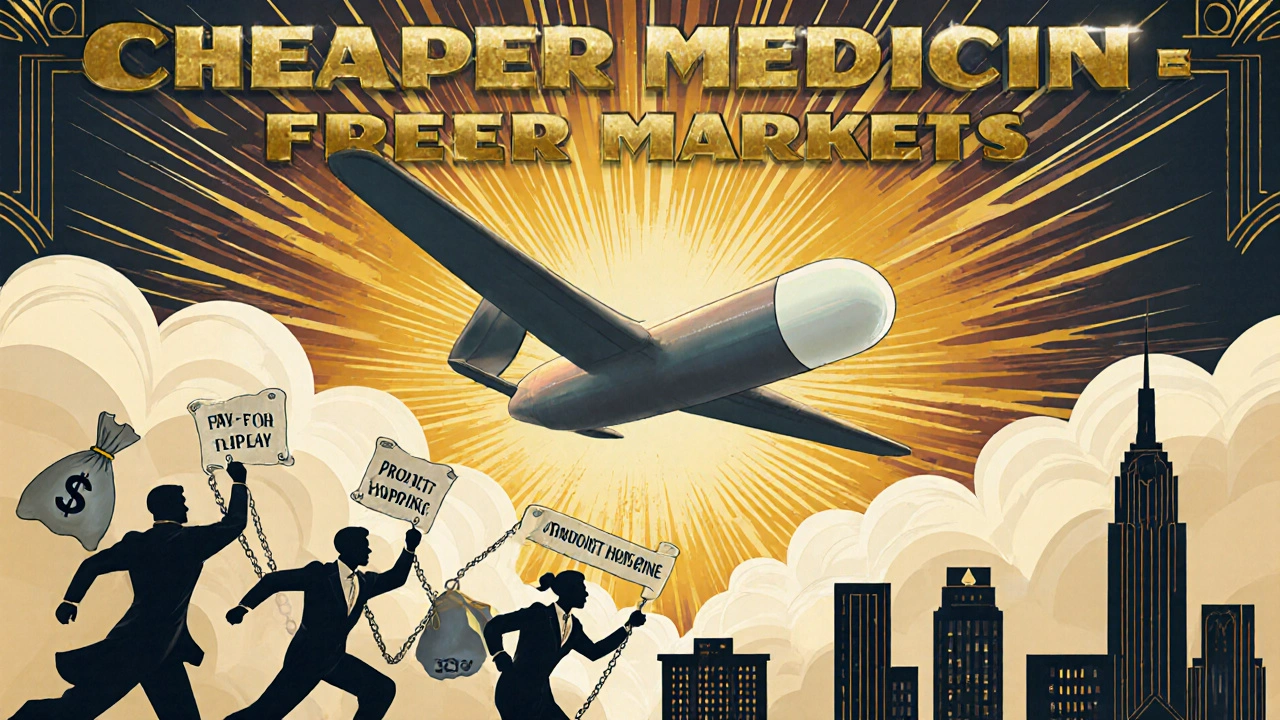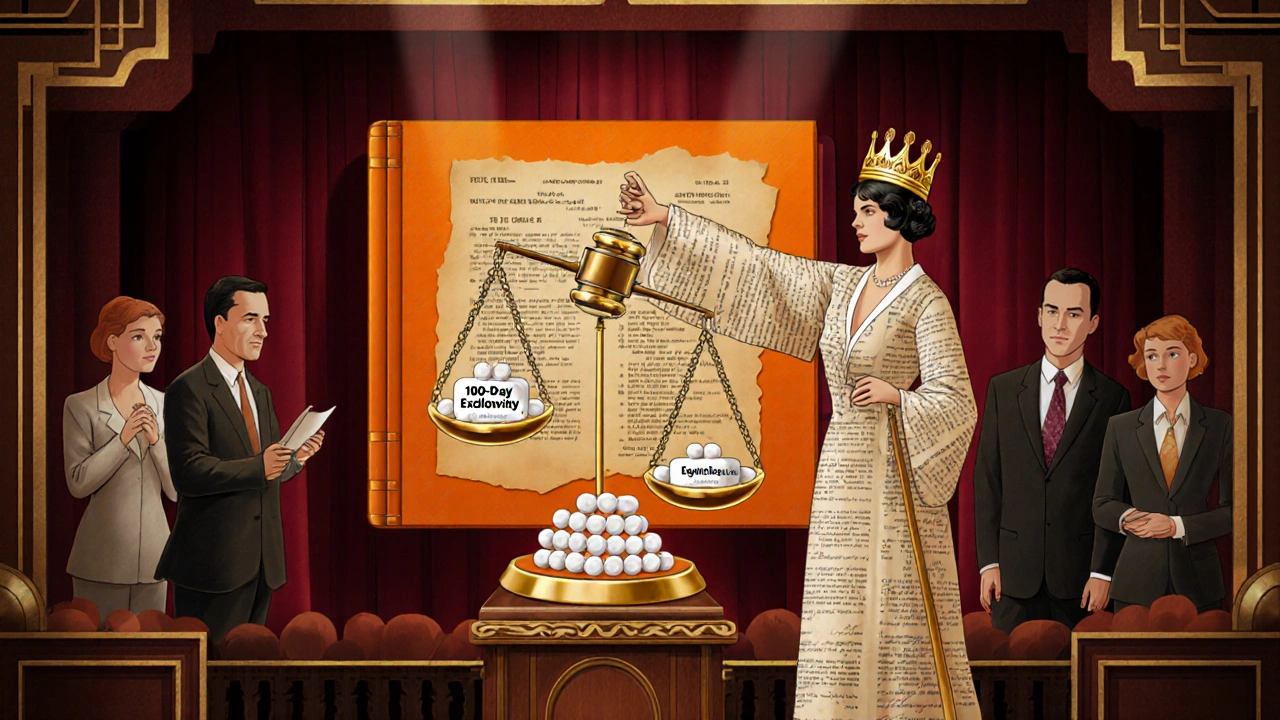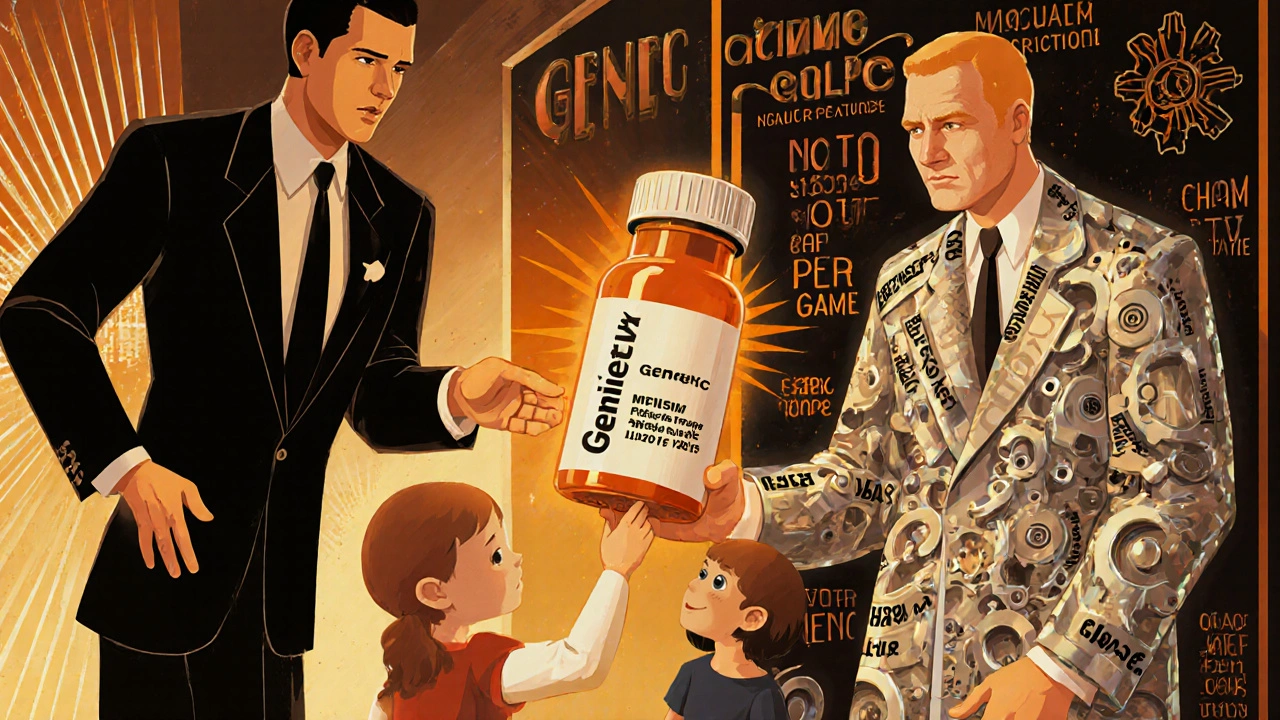Antitrust Laws and Competition Issues in Generic Pharmaceutical Markets

When you walk into a pharmacy and pick up a generic version of your prescription, you’re benefiting from a legal system designed to keep drug prices low. But behind that simple act lies a complex battle between innovation, profit, and fairness - one shaped by antitrust laws and decades of legal maneuvering in the generic drug market.
How Generic Drugs Became the Norm
In 1984, the U.S. Congress passed the Hatch-Waxman Act to fix a broken system. Before then, branded drug companies held near-monopolies even after their patents expired. Generic manufacturers couldn’t easily enter the market because they had to repeat expensive clinical trials just to prove their version worked the same. The Hatch-Waxman Act changed that. It let generic companies file an Abbreviated New Drug Application (ANDA), proving bioequivalence without redoing full trials. In return, they had to certify whether they were challenging any existing patents.
The law gave the first generic company to file a Paragraph IV certification - meaning they claimed a patent was invalid or not infringed - 180 days of exclusive market access. That single incentive turned the generic drug industry into a high-stakes race. By 2016, generics made up 90% of all U.S. prescriptions, saving consumers over $1.68 trillion between 2005 and 2014. In 2012 alone, Americans saved $217 billion just by choosing generics.
The Dark Side of Competition: Pay-for-Delay and Other Tricks
But not all competition is fair. The same system meant to speed up generics has been exploited. One of the worst abuses is called "pay-for-delay." It happens when a branded drug company pays a generic manufacturer to stay out of the market. Instead of fighting in court, they cut a deal: the generic gets cash, and the brand keeps its monopoly longer.
The Federal Trade Commission (FTC) has called this practice "anticompetitive" and "harmful to consumers." In 2013, the U.S. Supreme Court ruled in FTC v. Actavis that these deals could violate antitrust laws if they involve large, unexplained payments. Since then, the FTC has pursued 18 such cases between 2000 and 2023, with settlements totaling over $1.2 billion. One of the biggest examples? Gilead Sciences paid $246.8 million in 2023 to settle allegations it blocked generic versions of its HIV drug Truvada.
Other tactics are just as sneaky. "Product hopping" is when a brand makes a tiny change to its drug - like switching from a pill to a capsule - right before the patent expires. Then it pushes doctors and patients to switch to the new version, claiming it’s better. Even though the old version is still available, the new one gets new patent protection. AstraZeneca did this with Prilosec and Nexium, and courts have struggled to decide if it’s legal.
Then there’s "sham citizen petitions." Companies file fake complaints with the FDA, claiming safety issues with a generic drug. The FDA has to respond, and the process can delay approval by months or even years. Teva Pharmaceuticals is currently being sued by the FTC for allegedly using this tactic to block a generic version of its multiple sclerosis drug Copaxone.

The Orange Book and Patent Games
The FDA’s "Orange Book" lists every patent linked to a branded drug. Generic companies must check this list and certify against each one. But some branded companies abuse the system by listing patents that don’t even cover the drug’s active ingredient - like packaging patents or method-of-use patents - just to create more hurdles.
In 2003, the FTC took action against Bristol-Myers Squibb for improperly listing patents on its drug Avapro. These weren’t real barriers to generic entry, but they delayed it anyway. The FTC called it a "regulatory manipulation," and it’s still happening today. Companies now list dozens of patents, some of which are weak or expired, just to confuse generic applicants and scare them off.
Global Differences: How Other Countries Handle It
The U.S. isn’t alone in fighting these battles. The European Union has taken a harder line on regulatory abuse. In 2023, the European Commission fined companies for withdrawing marketing authorizations in certain countries to block generic entry. They’ve also cracked down on misleading claims about generic drugs - like telling doctors they’re less safe or effective, even when there’s no evidence.
China just released new antitrust guidelines in January 2025, targeting five "hardcore" violations in pharma: price fixing, market division, output restrictions, joint boycotts, and blocking new technology. As of Q1 2025, six cases had been penalized, and five involved price fixing through text messages, apps, and even algorithms. Chinese regulators are now using AI to monitor pricing patterns across online pharmacies and hospitals.
While the U.S. focuses on reverse payments and product hopping, the EU and China are more focused on systemic manipulation of regulatory processes. That’s why the European Commission estimates that delays in generic entry cost European consumers €11.9 billion every year.

Who Pays the Price?
These legal games don’t just affect corporate profits - they hit real people. A 2022 Kaiser Family Foundation survey found that 29% of U.S. adults skipped or cut doses of their medication because they couldn’t afford it. Many of those cases involved drugs where generic entry was delayed by anticompetitive practices.
When a generic enters the market, prices drop fast. The first generic typically cuts the price by at least 20% in a year. With five competitors, the price falls by nearly 85%. But if that first generic is blocked for a year, the cost stays high. And for chronic conditions - diabetes, high blood pressure, asthma - that delay can mean patients go without treatment.
It’s not just about money. It’s about trust. When patients are told generics are "inferior" or "riskier," they believe it. That’s why disparagement campaigns - where branded companies spread misinformation about generic versions - are so damaging. Courts and regulators are starting to take these claims seriously, but enforcement is slow.
What’s Next?
The FTC’s 2022 workshop on generic drug entry showed that even after a patent expires, barriers remain. New strategies are emerging: companies are buying up small generic manufacturers to control supply chains, or signing exclusive distribution deals with pharmacies to block competitors from getting shelf space.
Regulators are catching on. The FTC is pushing for faster approval of generics, stricter rules on patent listings, and penalties for companies that file sham petitions. Some lawmakers are calling for automatic generic entry on patent expiry, with no exceptions. Others want to ban all pay-for-delay deals outright.
But change won’t come fast. The pharmaceutical industry spends billions lobbying Congress and the FDA. And courts still struggle to draw the line between legitimate patent protection and illegal market manipulation.
For now, the system remains a tug-of-war. On one side, innovation matters. Developing a new drug takes over a decade and costs billions. On the other, access matters. Millions of people rely on affordable generics to survive. Antitrust laws were meant to balance those interests. Too often, they’re being bent - not broken - to serve profits over people.
What is the Hatch-Waxman Act and how does it affect generic drugs?
The Hatch-Waxman Act of 1984 created a legal pathway for generic drug manufacturers to bring cheaper versions of branded drugs to market without repeating expensive clinical trials. It allows generics to file an Abbreviated New Drug Application (ANDA) and grants 180 days of market exclusivity to the first company that successfully challenges a patent through a Paragraph IV certification. This law is why generics now make up 90% of U.S. prescriptions and have saved consumers over $1.6 trillion since 2005.
What is a pay-for-delay agreement?
A pay-for-delay agreement is when a brand-name drug company pays a generic manufacturer to delay launching its cheaper version. Instead of competing in court, the two companies settle with cash in exchange for the generic staying off the market. These deals keep drug prices high and are considered anti-competitive. The U.S. Supreme Court ruled in 2013 that such agreements can violate antitrust laws if they involve large, unexplained payments.
How do companies use the FDA’s Orange Book to block generics?
The Orange Book lists patents associated with a branded drug. Some companies abuse this by listing patents that don’t actually protect the drug’s active ingredient - like packaging, dosage form, or method-of-use patents. These weak or irrelevant patents create legal barriers that scare off generic manufacturers. The FTC has taken action against companies like Bristol-Myers Squibb for this practice, calling it a form of regulatory manipulation.
What is product hopping in the pharmaceutical industry?
Product hopping is when a drug company makes a minor change to its medication - such as switching from a pill to a capsule or adding a new coating - right before its patent expires. It then markets the new version as superior and pushes doctors and patients to switch. This delays generic competition because the original version is no longer promoted, even though it’s still available. AstraZeneca’s switch from Prilosec to Nexium is a well-known example.
How do antitrust laws in China differ from those in the U.S.?
China’s 2025 Antitrust Guidelines for the Pharmaceutical Sector focus on five "hardcore" violations: price fixing, market division, output restrictions, joint boycotts, and blocking new technology. Chinese regulators are actively using AI to detect collusion through messaging apps and pricing algorithms. As of early 2025, most penalized cases involved price fixing through direct agreements or digital communication. In contrast, the U.S. focuses more on pay-for-delay deals, sham petitions, and product hopping.
Why do generic drugs cost so much less than brand-name drugs?
Generic drugs cost less because they don’t need to repeat the expensive clinical trials required for new drugs. Under the Hatch-Waxman Act, they only need to prove they’re bioequivalent to the brand-name version. Since they don’t carry the R&D costs, they can be sold at a fraction of the price - often 30% to 90% cheaper. Competition among multiple generic makers drives prices even lower, sometimes by 85% within a few years.
